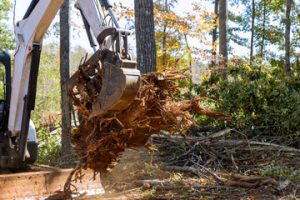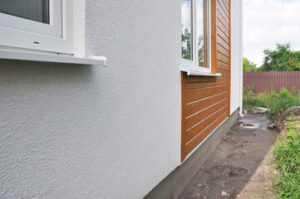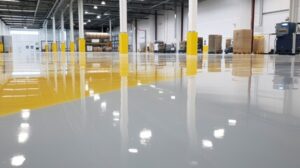Land Clearing Temple TX is the process of removing overgrown vegetation on property to improve accessibility and safety. It also helps prevent pest infestations and weed growth, as well as reduces the risk of wildfires.

Experts can use various clearing methods depending on the size of the property, vegetation type, and end goals. They will take local environmental regulations and zoning laws into account to ensure the project is completed safely and legally.
Land clearing creates clear pathways that make it easier for people and vehicles to navigate the property. This improves accessibility and reduces the risk of accidents caused by tripping hazards or falling trees. It also allows property owners to take advantage of their landscape design potential by revealing natural features like streams or unique trees that were previously hidden by overgrown vegetation.
Land Clearing involves heavy machinery and can be dangerous, but proper safety protocols minimize the risk of accidents. It’s important to provide proper training and personal protective equipment (PPE) for workers and to conduct regular safety meetings or toolbox talks to ensure that everyone on-site understands their responsibilities and how to perform their tasks safely. In addition, it’s essential to contact local utility companies before starting any work so that they can identify any underground lines that may be in the area.
Lastly, it’s a good idea to hire an experienced land clearing contractor with the right equipment for the job. These professionals have the expertise and equipment necessary to quickly clear large areas of land without causing damage to the surrounding environment or infrastructure. They can also recommend the most efficient methods for removing specific types of vegetation, such as trees and brush.
Land clearing enhances the value of your property. Overgrown and cluttered lots are less attractive to prospective buyers, especially if you’re planning on selling your property in the future. By reducing the amount of work and money it takes to maintain your lot, land clearing can help you get a better price when you’re ready to sell.
Reduced Risk of Pest Infestations
Overcrowded areas with dense plants and trees offer natural shelter to pests, which increases their population and puts nearby structures at risk of damage. Land clearing eliminates these hazards and promotes healthy plant growth. Land clearing methods include stump grinding, grubbing, chemical clearing, and controlled burning. Each of these techniques returns nutrients back into the soil while removing debris and unwanted vegetation.
Dead and rotting tree stumps, leaves, and other debris create fire hazards that can threaten the lives and property of those on and around the property. Land clearing removes these threats and reduces the risk of wildfire, making it an essential part of any property management plan.
Pest infestations can cost homes and businesses significant financial losses, from the gnawing of rodents that compromise electrical systems to termites silently undermining wooden beams. Preventing and controlling pests can help minimize these costs by identifying the points of entry into a building, such as overhanging branches, improperly sealed trash cans, cracks in walls, and standing water. Land clearing and regular yard maintenance can also limit the availability of food, shelter, and water to pests, including mice, rats, cockroaches, spiders, ants, and mosquitoes.
Overgrown vegetation competes with other plants for sunlight, water, and nutrients, depriving them of these resources. Performing land clearing allows other plants to thrive and provide the necessary habitats for wildlife, such as birds, squirrels, and rabbits. Maintaining proper soil health through practices like land aeration, overseeding, and mulching can further reduce the number of available habitats for pests.
Reduced Risk of Wildfires
In areas prone to wildfires, land clearing can play an important role in fire prevention. Regular maintenance, such as debris removal and clearing undergrowth, significantly reduces the amount of combustible material on properties, lowering the risk for wildfires and protecting people and property.
Several studies have linked the increased incidence of wildfires to deforestation, which leaves the earth’s vegetation exposed to the sun and other elements, creating conditions ripe for a fire to start. Additionally, open burning for agricultural purposes, discarded cigarette butts, and other human activities contribute to the risk of wildfires.
The process of land clearing includes a number of steps that ensure that the final product is ready for its intended purpose, while minimizing environmental impact and complying with regulatory standards. It starts with a comprehensive inspection to determine the type of vegetation present and any potential obstacles. This information is used to develop a clear plan for clearing the property, taking into account safety, accessibility, and environmental considerations. Once the plan is in place, the actual clearing can begin. This step may include using a machine to remove the vegetation, such as a bulldozer or excavator, or it may involve manual removal of the trees and debris. Once the land is cleared, it’s inspected again to confirm that all of the necessary work has been completed and that the site is safe for its intended use.
When the site is complete, forestry mulching can be used to return organic material to the soil, preventing erosion and maintaining the soil’s health. This technique also helps to preserve wildlife habitats, maintain biodiversity, and protect water quality. In addition, selective clearing allows for the creation of buffer zones along water bodies to prevent pollutants from reaching the natural environment.
While land clearing has a long list of benefits, it is essential that the process be approached responsibly to avoid negative environmental impacts. This means obtaining the necessary permits, conducting a thorough inspection before starting work, and following sustainable practices that support biodiversity and minimize environmental damage. By incorporating forestry mulching, the right land clearing company can help to promote healthy ecosystems while ensuring that the site is ready for its intended purpose.
Enhanced Aesthetic Appeal
The land clearing process is a critical step in preparing a construction site. Clearing the land makes it easier for builders and civil engineers to dig trenches for sewage, electricity lines or roads. It also eliminates potential safety hazards and pest habitats, allowing them to work safely on the site. Clearing also helps expedite the construction process by removing tree stumps and debris, which can otherwise delay excavation activities.
A clear and well-maintained property is more visually appealing, adding to its curb appeal and boosting its value. The process of removing debris, trees and other impediments from the landscape offers a blank canvas that is ideal for a range of landscaping projects. Whether you are looking to add a garden, create an outdoor seating area or build a new home, land clearing is the first step to unlocking the full potential of your property.
In addition to improving access and safety, land clearing can help prevent wildfires. Overgrown vegetation increases the risk of fire by creating dry fuel, making it difficult for firefighters to extinguish wildfires. By removing dense vegetation and implementing other fire prevention measures, you can significantly reduce the risk of wildfires on your property.
Unlike the popular perception of clearing land as an act of stripping nature, the right methods can support biodiversity and foster ecological balance. For instance, planting native species and integrating water conservation practices ensures that cleared spaces can sustain a range of plant and animal life. Additionally, embracing climate change-conscious strategies such as adaptive landscaping can contribute to the long-term viability of cleared spaces and create a harmonious balance between development and preservation.
Clearing your land can offer a wide range of benefits, including improved accessibility and safety, reduced pest threats and a more attractive appearance. Using the right techniques and equipment for clearing can minimize environmental impact while maximizing its effectiveness. For the best results, contact a reputable and experienced land clearing company to take care of all your clearing needs. The company will inspect your property and develop a clear plan for addressing your specific needs. They will also ensure that all the necessary permits are in place and comply with local regulations to avoid any legal complications.


